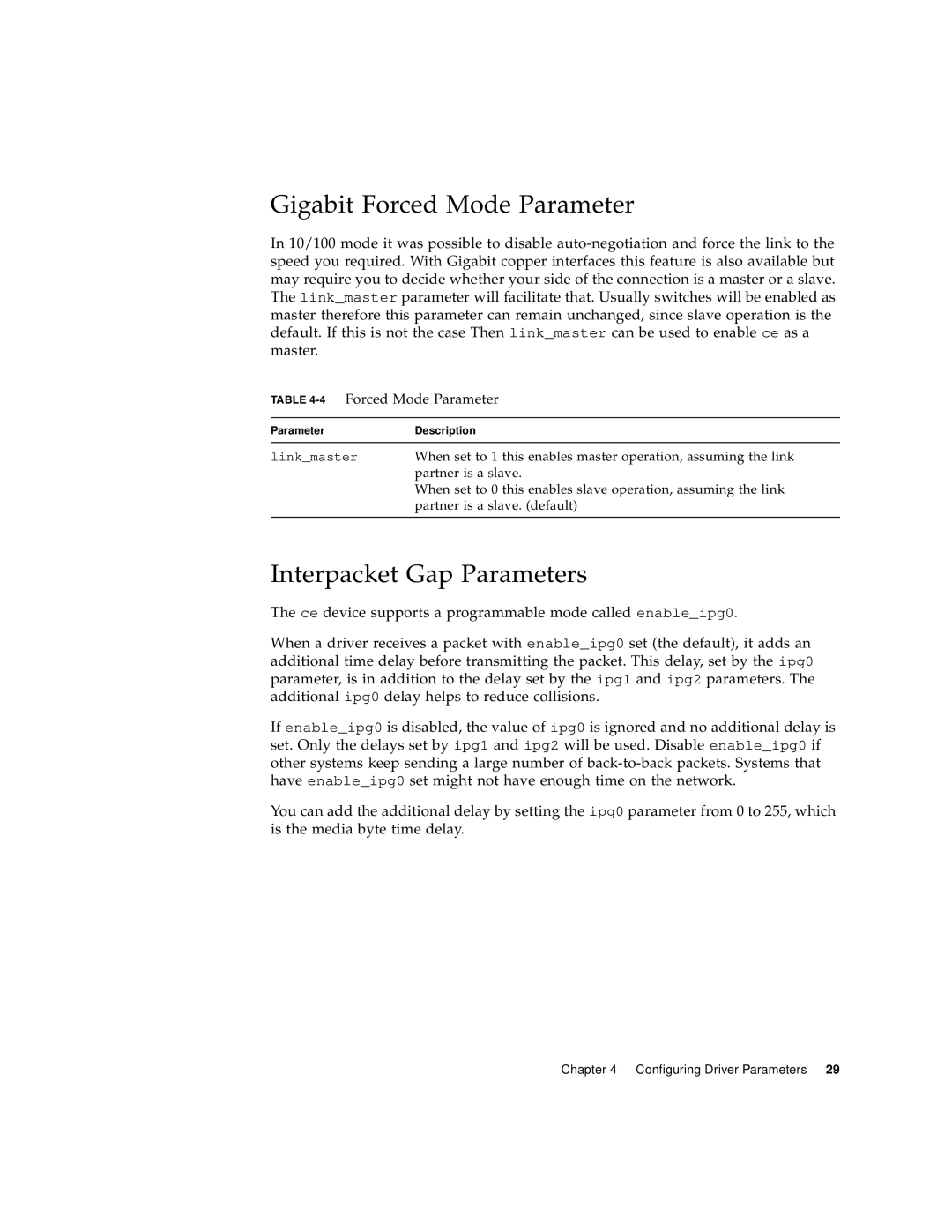Gigabit Forced Mode Parameter
In 10/100 mode it was possible to disable
TABLE 4-4 Forced Mode Parameter
Parameter | Description |
|
|
link_master | When set to 1 this enables master operation, assuming the link |
| partner is a slave. |
| When set to 0 this enables slave operation, assuming the link |
| partner is a slave. (default) |
|
|
Interpacket Gap Parameters
The ce device supports a programmable mode called enable_ipg0.
When a driver receives a packet with enable_ipg0 set (the default), it adds an additional time delay before transmitting the packet. This delay, set by the ipg0 parameter, is in addition to the delay set by the ipg1 and ipg2 parameters. The additional ipg0 delay helps to reduce collisions.
If enable_ipg0 is disabled, the value of ipg0 is ignored and no additional delay is set. Only the delays set by ipg1 and ipg2 will be used. Disable enable_ipg0 if other systems keep sending a large number of
You can add the additional delay by setting the ipg0 parameter from 0 to 255, which is the media byte time delay.
Chapter 4 Configuring Driver Parameters 29
